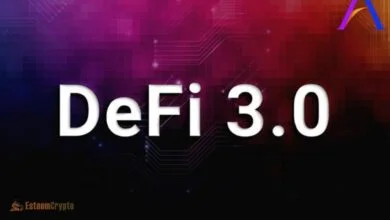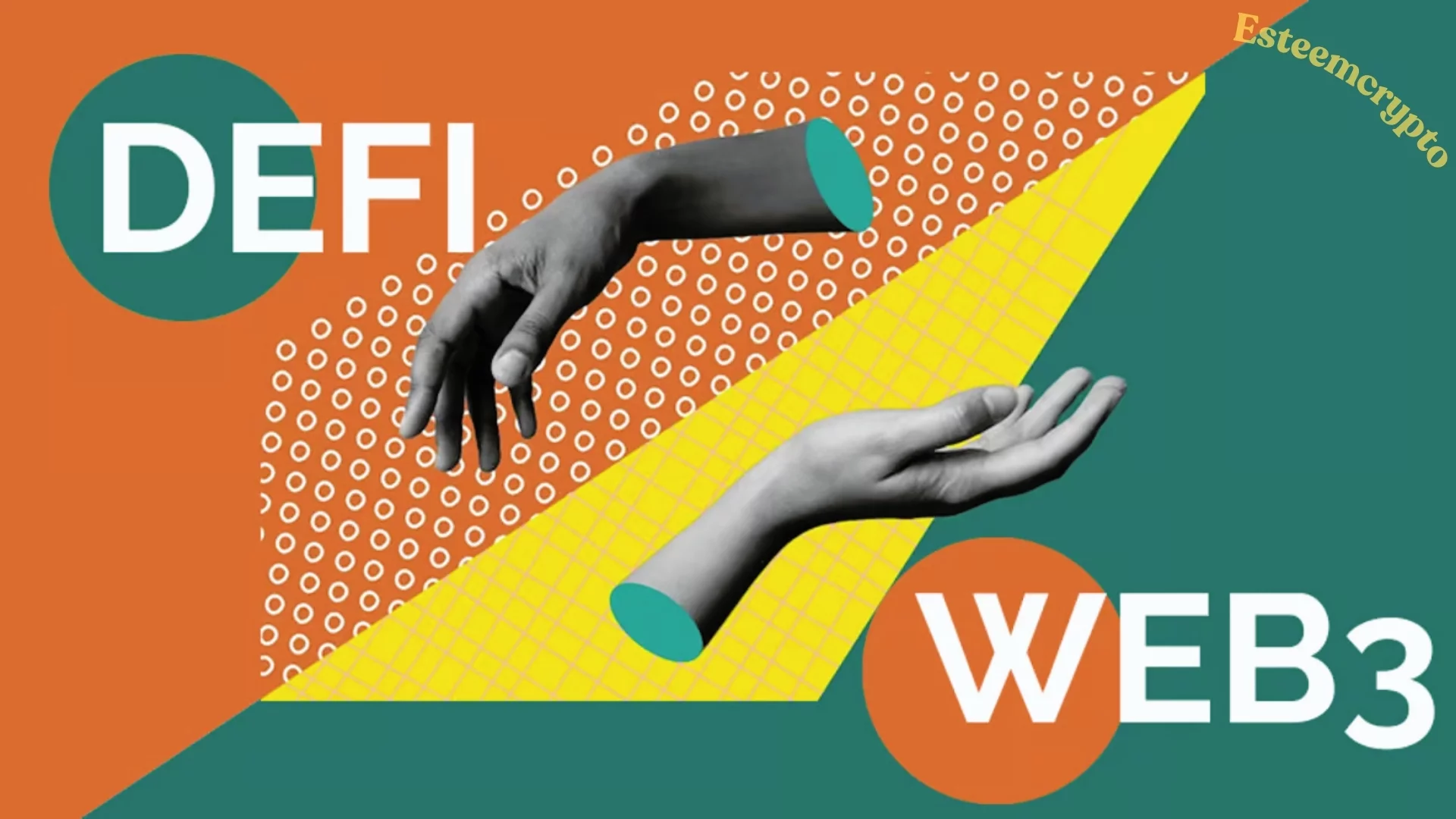What is DeFi? Guide to Decentralized Finance By Esteemcrypto

What is DeFi? Guide to Decentralized Finance By Esteemcrypto. The asset, idea, and technology behind Bitcoin came together to form a thriving industry after its introduction in 2009. Numerous projects and businesses within the cryptocurrency and blockchain sector have carved out specific niches to address particular use cases.
As an alternative to conventional banking, the decentralized finance (DeFi) industry emerged as a distinct subset. To be more precise, smart contracts are the building blocks of DeFi and are the engines that drive DApps and protocols. Ethereum was the foundation for many of the first DeFi apps, and it is still the platform upon which the vast bulk of the ecosystem’s total value locked (TVL) is based.
Bitcoin (BTC) $69,654 has features that are said to be foundational for decentralization. But DeFi takes those features and adds new possibilities to it. As a subset of the larger cryptocurrency market, DeFi provides many of the same services as traditional financial institutions but with user power rather than a governing body.
DeFi members can save, invest, trade, market-make, and more, but lending was the original goal. Decentralized finance aims to replace banks. DeFi uses open-source programming to let anyone build on current apps permissionlessly.
Not only does DeFi’s decentralization spread power, but it also spreads risk. If a business stores all of its customers’ information in one place, a hacker may access a deluge of data with only one site visit. On the other hand, data could be more protected if stored in multiple places or if that weak link were eliminated. This page aims to define DeFi, describe its operation, and shed light on DeFi trading and decentralized banking.
DeFi vs. CeFi (Centralized Finance)
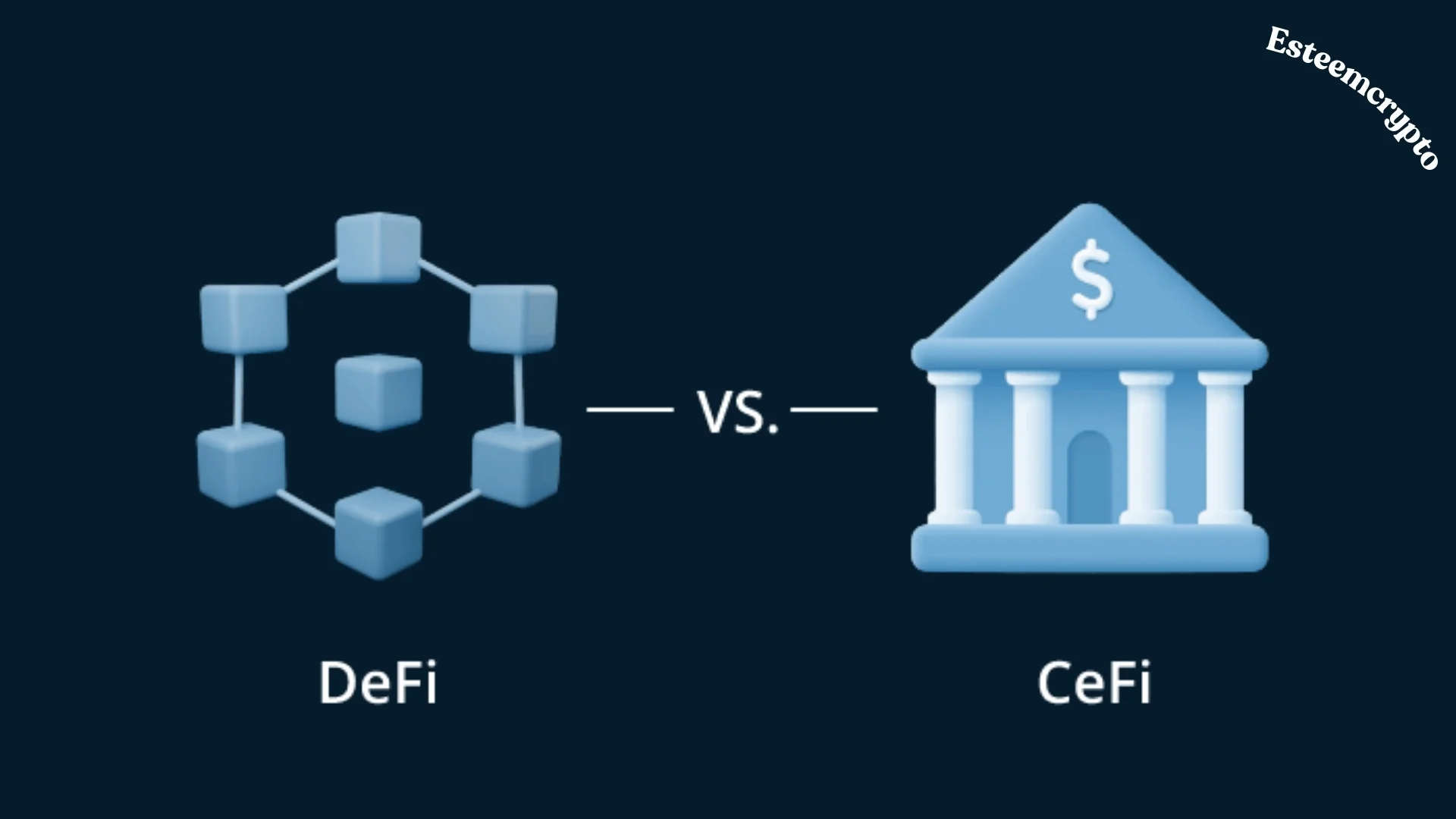
This comparison examines commercial banks. Financial institutions allow money storage, borrowing, interest, transactions, etc. Many years of success prove commercial banks’ reliability. Commercial banks can avoid theft via insurance and other security measures.
Some of these establishments hold and control your assets. Certain activities are time-sensitive and subject to banking hours, and settlement delays can make transactions unpleasant. Additionally, commercial banks require client information and identification documents to participate.
Decentralized financial services that run wholly online, eliminating the need for banks, are called “DeFi” in the market niche. Transactions occur almost instantly in the decentralized financial system since no intermediary exists. Access your cryptocurrency anytime, anywhere, with a computer, hardware wallet, or other storage medium.
The technology behind Bitcoin and other cryptocurrencies gives them these traits. DeFi uses blockchain technology to complete transactions faster, cheaper, and, in some cases, more securely than methods with human intermediaries. Using crypto technology, decentralized finance can solve many difficulties with conventional financial markets:
Centralized finance managers oversee asset classes and processes. Instead, decentralized finance manages assets via intelligent protocols. Choosing a platform depends on trusting its developers or organization. Custodial CeFi platforms like Coinbase.com protect your cryptocurrency. However, a Coinbase wallet works like a cash wallet, giving you complete control over your cryptocurrency.
DeFi ecosystems use distributed ledger technology and smart contracts for P2P interactions. These systems regulate systems. Location and identification documents are not required to participate in such findings.
Predetermined regulations govern this financial system. If you wanted to borrow money without a bank, you could store a coin in a smart contract, a safe digital location. You would receive another asset. Your collateral assets are frozen until you repay the debt. Decentralized technology eliminates intermediaries; hence, DeFi solutions are P2P even without direct P2P interactions.
Why is Decentralized Finance(DeFi) Important?
To enable decentralized banking, which was previously impossible since transactions needed to be approved by third parties, DeFi uses a peer-to-peer network to remove intermediaries. Customers are often oblivious to the fundamental rules controlling financial goods and services, as the 2008–2009 global financial crisis demonstrated. Consequently, intermediaries can no longer be trusted.
DeFi aims for a permissionless, open, and trustless financial market. Much DeFi technology targets the present financial system, which may improve the user experience (for companies and their customers).
How Does DeFi Work?
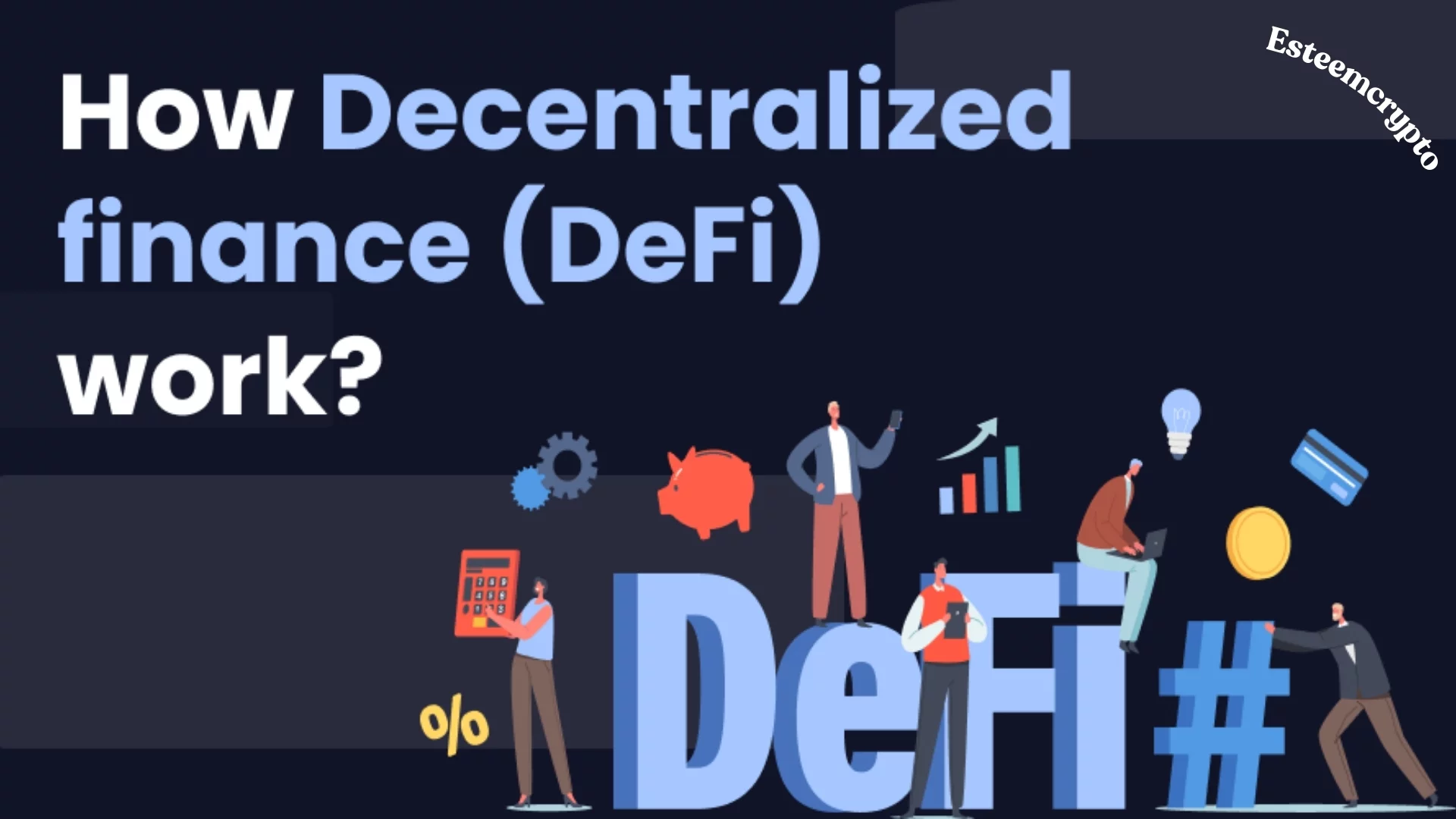
Despite DeFi’s frequent association with cryptocurrencies, its scope extends beyond generating monetary or value-based digital assets. DeFi’s smart contracts aim to supersede more conventional financial infrastructure.
The lack of intermediaries to approve DeFi application transactions means no financial institutions or banks handle your funds. DeFi protocols also have an air of openness because the code is available for everyone to look at. Another option is to look into open networks that operate across borders. The majority of the user-accessible applications are developed on the Ethereum blockchain.
What Makes up Decentralized Finance(DeFi)?
In 2020, DeFi hit a new peak, popularizing a new financial movement and flooding the cryptosphere with ideas. There is no definitive beginning date for the DeFi sector other than Bitcoin’s introduction in 2009 because Bitcoin fundamentally possesses several DeFi qualities.
However, in 2017, several ecosystems like MakerDAO and Compound Finance became popular, bringing more financial features to crypto and DeFi. People started using DeFi solutions for yield farming and other techniques in 2020, leading to the DeFi niche gaining traction as more platforms were available.
Decentralized exchanges (DEXs)
DEXs eliminate the requirement for a custodial third party by directly facilitating non-custodial digital asset trading between users. Although DEXs are just a tiny portion of the DeFi sector, they have long been an integral aspect of the cryptocurrency business as a whole. They let people trade digital money without requiring them to sign up for an exchange.
With decentralized exchanges (DEXs), you can store assets independently of a central platform and trade them whenever you want via blockchain transactions. In 2020, automated market makers, a form of DEX, began using smart contracts and liquidity pools to enable the buying and selling of cryptocurrency.
Because DEXs are usually constructed on top of separate blockchains, their compatibility is technology-specific. For instance, ERC-20 tokens and other assets produced on Ethereum can be traded on DEXs based on the Ethereum blockchain.
To use DEXs, you need a wallet that is interoperable with them. You have control over your assets using self-custody crypto wallets, and some of them work with DEXs. The onus for the safety of your money is on you with this form of asset storage, though. Furthermore, compared to centralized exchanges, some DEXs may charge more money and offer less functionality.
DEXs have made significant progress in liquidity and building a regular user base, but they are only improving. Trading volumes on DEXs are anticipated to rise further as these exchanges enhance their scalability, making them faster and more efficient.
Aggregators and wallets
Aggregators facilitate user interactions with the DeFi market. At their core, decentralized asset management platforms autonomously distribute user crypto assets among several yield-farming platforms to maximize profits.
Digital assets can be stored and transferred in wallets. Wallets might be software, hardware, or exchange-specific and can hold a single or numerous assets. A critical part of DeFi is self-hosted wallets, where you store and control your private keys. These wallets can aid with different uses of the DeFi platform. Exchange-based wallets manage your private keys, but you have less control over them and less responsibility for their security.
Decentralized marketplaces
One of the most fundamental applications of blockchain technology is decentralized marketplaces. They enable users to conduct transactions with each other trustless, that is, without the necessity of a third party, which is what gives rise to the name “peer-to-peer” networks. Blockchains enable users to trade or exchange certain assets, such as nonfungible tokens (NFTs). At the same time, the top one for decentralized marketplaces is Ethereum, a platform for smart contracts.
Oracles/prediction markets
Oracles work with a third party to bring real-world data, not those from the blockchain, into the blockchain. As a result of oracles, DeFi crypto platforms now feature prediction markets where users may wager on the outcome of events like elections or price fluctuations, with payouts managed by smart contracts.
Layer 1
The developers’ chosen blockchain is represented at Layer 1. It is where the protocols and applications of DeFi are put into use. Ethereum isn’t the only layer-1 solution in decentralized finance; Polkadot (DOT), Tezos (XTZ) ($0.88), Solana (SOL) ($144), BNB, and Cosmos (ATOM) ($8.17) are among its competitors. As the DeFi space develops, these solutions will undoubtedly interact with each other.
Several advantages may accrue from allowing DeFi sector solutions to operate on multiple blockchains. A competitive ecosystem may lead to better functionality if rival blockchains encourage blockchains to increase speed and decrease fees. There is more space for growth and traffic when multiple layer-1 blockchains exist rather than when everyone tries to cram onto one.
DeFi Use Cases

To help answer the question, “What is DeFi?” it helps to study its application cases. Whether you want to lend or borrow, trade on DEXs, stake your digital assets, or something else—even games—there are new ways to serve those demands. Below is a list of some critical use cases for decentralized finance.
Lending platforms
Lending and borrowing have grown in popularity among DeFi’s most popular features. Users can borrow money using their cryptocurrency as collateral through lending protocols. With lending solutions commanding total value locked (TVL)—the amount of money kept locked in any solution at any given time—in the billions of dollars, decentralized finance has witnessed vast amounts of capital flow through its ecosystem.
Payments and stablecoins
A stable asset or unit of account is necessary for DeFi to be considered a financial system that includes contracts and transactions. All parties involved must reasonably expect the asset’s value will not plummet. Stablecoins fill this need.
Stablecoins can stabilize the lending and borrowing typical in the DeFi market. They are great for trade and commerce because they aren’t as volatile as cryptocurrencies and are usually pegged to a fiat currency like the dollar or the euro.
Margin and leverage
The margin and leverage components elevate the decentralized finance market by enabling users to borrow cryptocurrency on margin with other cryptocurrencies as collateral. Smart contracts can also be written with leverage, increasing the user’s returns. Given that the system is algorithmic and lacks a human component in the event of an issue, employing these DeFi components also raises the user’s risk exposure.
DeFi-native Activities
Many decentralized exchanges rely on liquidity pools as a trading mechanism. They facilitate trade liquidity by charging both buyers and sellers. Liquidity providers can join a pool by sending assets to a smart contract; in return, they will receive pool tokens, which they can use to participate in the pool and generate passive profit from the fees paid by traders. To withdraw your investment, you must have pool tokens.
Yield farming, also called liquidity mining, is an additional activity in the DeFi sector that entails trying to make money through different DeFi initiatives by joining liquidity pools. Even if yield farming has many moving parts, there is a significant draw for market players: You can leverage your cryptocurrency holdings to generate additional cryptocurrency.
In yield farming, participants lend out their cryptocurrency to one another in exchange for interest, which is also paid in cryptocurrency. This interest is typically in the form of “governance tokens,” which enable liquidity providers a voice in how the protocol is run. This innovation is a game-changer in the DeFi sector since it allows investors to put their crypto to work and increase returns. The “Wild West” of DeFi is yield farming, where market players seek the most effective tactics, which they then frequently keep hidden not to let other traders in on their secret.
Defi Risks
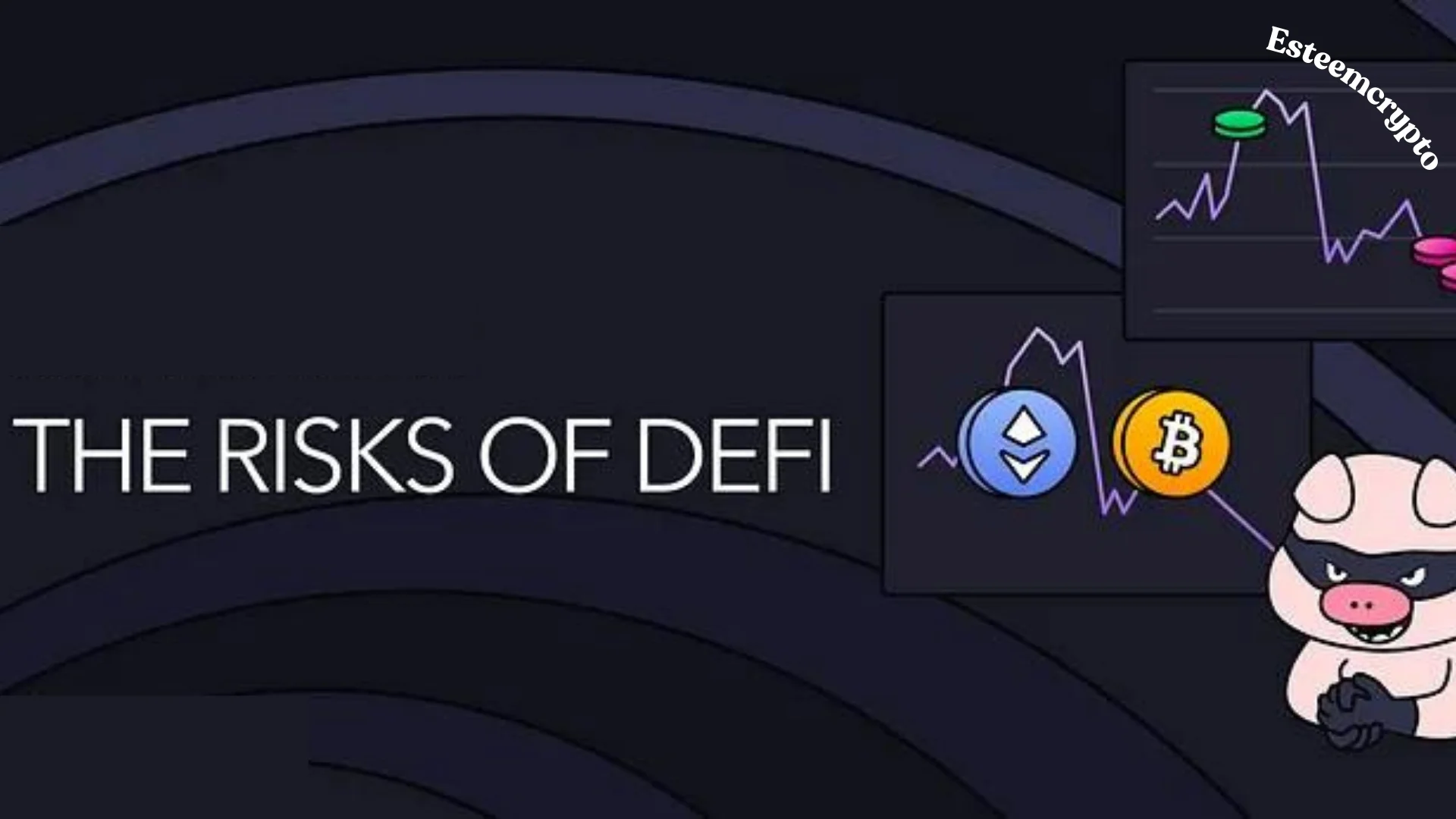
Although it has great potential, the decentralized finance industry is still in its early stages and is dealing with specific growing pains. DeFi still needs blockchains to be more scalable before it can achieve widespread acceptance. Most of the blockchain’s infrastructure is still in its early stages, making it difficult for developers and traders to work with.
Ethereum 2.0 (or Eth2) was developed to improve scalability by addressing slow transaction speeds on some systems. The very sluggish Fiat on-ramps to DeFi systems could hinder user adoption.
DeFi has experienced substantial growth. Due to its infancy and inventiveness, the legal specifics surrounding DeFi have probably not yet come to fruition. Governments worldwide are considering incorporating DeFi into their existing regulatory frameworks or enacting new legislation for the industry. Conversely, certain restrictions may already apply to DeFi and its customers.
It is hard to say what the future holds in terms of adoption. Instead of DeFi entirely displacing conventional financial options, one possible consequence is that traditional finance adopts some DeFi features while keeping some centralization. On the other hand, decentralized solutions might continue functioning independently of traditional banking.
How do you Make Money with DeFi?
The simplest way to make passive income using DeFi is to put your cryptocurrency into a protocol or platform that pays a yearly percentage yield. Staking refers to exchanging one token for another within a smart contract. You can also increase your token supply or obtain additional tokens by engaging through.
The first thing you need to do is acquire some cryptocurrency utilizing a fiat on-ramp, which means you’ll need to use cash. Remember that most of DeFi is built on the Ethereum blockchain. Thus, Bitcoin isn’t often accepted until you buy your cryptocurrency.
Is it Safe to Invest in DeFi?
Generally speaking, the investment risk associated with a token increases as its market capitalization decreases. So, before you invest, check the tokens’ liquidity. Also, ensure you know the deposits and the operational duration of a DeFi protocol before investment.
You can visit its website to determine whether the firm has taken adequate measures to mitigate its risks. You can also search online for news articles that discuss the protocol’s compromise and the measures taken to avoid a recurrence. To be clear, no DeFi protocol is risk-free. However, by considering the factors above, you may better assess the investment risk associated with each protocol.


